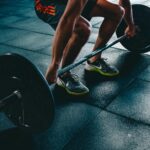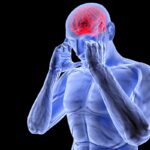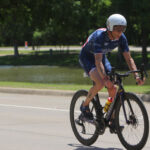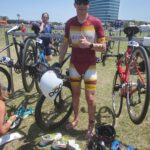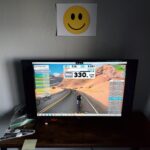A difficulty with dealing with mental preparation is that it is not tangible or easily measured. Unlike assessing your physical strength with weight lifting or your speed with a stopwatch, mental skills can not be directly assessed. Mental Edge Profiling helps you identify your psychological attributes to assist you in achieving your best performances.
Think of Mental Edge Profiling as physical testing for the mind. This approach has several benefits. Mental Edge Profiling offers you self-understanding. Without this awareness, you will not know what you need to work on to improve mentally. Mental Edge Profiling also leads to efficient change. Becoming the best athlete you can is a complicated process. You have to plan and organize all of your sports participation, school, work, and social life. It is difficult to find time to do everything. Without self-understanding, your sports participation will have little direction, will be trial-and-error, and will not be very efficient. And your training efforts will not lead to your goals quickly or easily. Mental Edge Profiling shows you what you need to work on so you can be efficient and focused in your sports training and participation.
Athletes need to be able to recognize their strengths and weaknesses in their sports. Clearly identifying your strengths will give you added confidence and show what you should rely on when participating. Unfortunately, athletes often avoid their less developed areas because they don’t like to think that they have weaknesses. This perspective limits your improvement because you never look at and work on your weaknesses. Improvement comes fastest when working on your weaknesses as well as your strengths as a part of your training.
Mental Edge Profiling involves rating yourself on 10 psychological factors that impact sports performance. These factors are: (1) confidence: how much you believe in your ability to perform your best (1-very low; 10-very high); (2) motivation: how committed you are to training and competition (1-very low; 10-very high); (3) intensity: how well you are able reach and maintain your ideal level of intensity during competition (1-not at all; 10-very well); (4) focus: how well you are able to stay focused and avoid distractions (1-not at all; 10-very well); (5) training: the quality of training you typically put in (1-poor quality; 10-high quality); (6) preparation: how mentally and physically prepared you are before competitions (1-not at all prepared; 10-very prepared); (7) emotions: how negative or positive your feelings are before and during competitions (1-very negative; 10-very positive); (8) pressure: how well you are able to handle competitive pressure (1-poorly; 10-well); (9) competitor: how well you perform in competition as compared to training (1-much worse; 10-much better); and (10) mental skills: how much you include mental skills such as positive thinking, relaxation, and mental imagery into your training and competitive preparation (1-not at all; 10-a great deal).
A similar approach can be taken using a Physical Edge profile to identify your physical strengths and weaknesses. In collaboration with Bill Fabrocini, director of The Aspen Club Sports Performance Center, I came up with 12 physical factors that significantly impact athletic performance: (1) strength: amount of force you generate for a specific muscle group (1-low; 10-high); (2) power: ability to combine strength and speed (1-low; 10-high); (3) endurance: ability of muscles to keeping working for a long period of time (1-low; 10-high); (4) cardiovascular: ability to heart and lungs to keep working for a long period of time (1-poor; 10-excellent); (5) flexibility: ability of muscles to lengthen (1-poor; 10-excellent); (6) agility: ability to change direction with quickness and power (1-poor; 10-excellent); (7) balance: ability to maintain center of gravity and equilibrium during an activity (1-poor; 10-excellent); (8) pain tolerance: ability to endure pain and discomfort during training and competition (1-poor; 10-excellent); (9) recovery: ability to recover from intense training periods (1-poor; 10-excellent); (10) health: degree of injury, illness, or fatigue you now have (1-poor; 10-excellent); (11) sleep: how well you are sleeping (1-poor; 10-excellent); (12) diet: how well you eat to get sufficient nutrition (1-poor; 10-excellent).
To complete your Mental and Physical Edge profiles, list the 10 psychological and 12 physical factors on a sheet of paper. Next to each factor, rate yourself on a 1-to-10 scale in terms of how you typically see yourself. For example, if you view yourself as moderately confident, but sometimes experience some negative thinking, you might give yourself a 5 or 6. If you have a generally poor diet, you might rate yourself a 2 or 3.
Having completed your Mental and Physical Edge profiles, you now have a numerical representation of what you perceive to be your mental and physical strengths and areas in need of improvement. It can be helpful to have a coach or training partner who knows you well also complete the profiles for you in order to determine the accuracy of your self-perceptions. If there is consistency in the two profiles, then it is likely that your beliefs about yourself are accurate. If not, you should examine where the differences lie and explore why your perceptions differ so greatly. This comparative process can increase your self-understanding even more. Typically, if you score below a 7 on a factor, it is probably an area you need to work on because it is interfering with your performances.
You can then compare the mental and physical areas you have identified as in need of improvement with your current training. Are you addressing those needs? You should specify those areas that should receive immediate attention, set goals to guide you in developing them, and then incorporate changes into your training to strengthen those areas. You can then complete the Mental and Physical Edge profiles periodically to track your progress in the areas you are working to improve.

